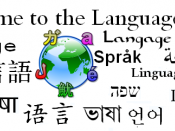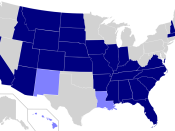Introduction
Grammar is often defined simply as "how words and their component parts combine to form sentences" (Oxford 2001). Unfortunately, the definition of grammar and the reality of its existence in our language are neither simple nor easily definable. Linguists have for years fought over whether the "rules" of language are fixed or dynamic, and educational theorists have toiled in a parallel mêlée over how it should be taught (if it is even to be "taught" at all). This paper will attempt to pick through some of that noise and see if any sense can be made of the sense of language, as well as pose a recommendation as to where it should reside in the pedagogy of our school systems.
A Little History
Linguists can generally be divided into two groups: "prescriptivists", or those who hold that language is set in stone by fixed rules, and "descriptivists", or those who believe that language is a dynamic entity that evolves from the cracks and patterns of actual usage (Cameron 1995).
There was a time, not so long ago, in a galaxy not so far away, when the prescriptivists were the ostensible monarchy of the grammar kingdom in the United States; a time when everyone seemed fairly clear about what should be taught and in what order (Nunberg 1983). Verbs in all their complexity dominated the scene, and conjugations and inflections were learned by repeating everything until you threw up. The result was that while many grammarians-to-be understood a good deal about how English was constructed, many also found writing to be a tiresome and confusing process that did little more than tease the boundaries of sanity (Finegan 1980).
All kidding aside, such a process, which requires a mastery of "the rules" before advancing to content, takes a great deal of...



Very Informative
I think this is the best essay could be written on this topic. Keep up doing the great work
0 out of 0 people found this comment useful.